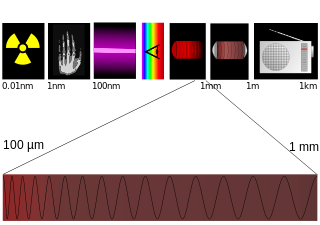
Hayabusa was a robotic spacecraft developed by the Japan Aerospace Exploration Agency (JAXA) to return a sample of material from a small near-Earth asteroid named 25143 Itokawa to Earth for further analysis. Hayabusa, formerly known as MUSES-C for Mu Space Engineering Spacecraft C, was launched on 9 May 2003 and rendezvoused with Itokawa in mid-September 2005. After arriving at Itokawa, Hayabusa studied the asteroid's shape, spin, topography, colour, composition, density, and history. In November 2005, it landed on the asteroid and collected samples in the form of tiny grains of asteroidal material, which were returned to Earth aboard the spacecraft on 13 June 2010.

The Japan Aerospace Exploration Agency (JAXA) is the Japanese national aerospace and space agency. Through the merger of three previously independent organizations, JAXA was formed on 1 October 2003. JAXA is responsible for research, technology development and launch of satellites into orbit, and is involved in many more advanced missions such as asteroid exploration and possible manned exploration of the Moon. Its motto is One JAXA and its corporate slogan is Explore to Realize.

Akatsuki, also known as the Venus Climate Orbiter (VCO) and Planet-C, is a Japanese (JAXA) space probe tasked to study the atmosphere of Venus. It was launched aboard an H-IIA 202 rocket on 20 May 2010, and failed to enter orbit around Venus on 6 December 2010. After the craft orbited the Sun for five years, engineers successfully placed it into an alternative elliptical Venusian orbit on 7 December 2015 by firing its attitude control thrusters for 20 minutes.

A sample-return mission is a spacecraft mission with the goal of collecting and returning samples from an extraterrestrial location to Earth for analysis. Sample-return missions may bring back merely atoms and molecules or a deposit of complex compounds such as loose material ("soil") and rocks. These samples may be obtained in a number of ways, such as soil and rock excavation or a collector array used for capturing particles of solar wind or cometary debris.

Hayabusa2 is an asteroid sample-return mission operated by the Japanese space agency, JAXA. It follows on from Hayabusa mission which returned asteroid samples in 2010. Hayabusa2 was launched on 3 December 2014 and rendezvoused with near-Earth asteroid 162173 Ryugu on 27 June 2018. It is in the process of surveying the asteroid for a year and a half, departing in December 2019, and returning to Earth in December 2020.
Several Asian countries have space programs and are actively competing to achieve scientific and technological advancements in space, a situation sometimes referred to as the Asian space race in the popular media as a reference to the earlier Space Race between the United States and the Soviet Union. Like the previous space race, issues involved in the current push to space include national security, which has spurred many countries to send artificial satellites as well as humans into Earth orbit and beyond. A number of Asian countries are seen as contenders in the ongoing race to be the pre-eminent power in space.

Hitomi, also known as ASTRO-H and New X-ray Telescope (NeXT), was an X-ray astronomy satellite commissioned by the Japan Aerospace Exploration Agency (JAXA) for studying extremely energetic processes in the Universe. The space observatory was designed to extend the research conducted by the Advanced Satellite for Cosmology and Astrophysics (ASCA) by investigating the hard X-ray band above 10 keV. The satellite was originally called New X-ray Telescope; at the time of launch it was called ASTRO-H. After it was placed in orbit and its solar panels deployed, it was renamed Hitomi. The new name refers to the pupil of an eye, and to a legend of a painting of four dragons, two of which were given eyes and flew into the sky, and two that were left eyeless and stayed as motionless art. The spacecraft was launched on 17 February 2016 and contact was lost on 26 March 2016, due to multiple incidents with the attitude control system leading to an uncontrolled spin rate and breakup of structurally weak elements.
The Jupiter Magnetospheric Orbiter is a cancelled space probe proposed by the Japanese Aerospace Exploration Agency (JAXA), to undertake detailed in situ studies of the magnetosphere of Jupiter as a template for an astrophysical magnetised disk.
The (Japanese) Lunar Exploration Program (月探査計画), is a program of robotic and human missions to the Moon undertaken by the Japanese Aerospace Exploration Agency (JAXA), and its division, the Institute of Space and Astronautical Science (ISAS). It is also one of the three major enterprises of the JAXA Space Exploration Center (JSPEC). The main goal of the program is "to elucidate the origin and evolution of the Moon and utilize the Moon in the future".
Arase, formerly known as Exploration of energization and Radiation in Geospace (ERG), is a scientific satellite to study the Van Allen belts. It was developed by the Institute of Space and Astronautical Science of JAXA. While there was a lowly scientist working on a similar project with the surname Arase, the satellite’s name has nothing to do with him but instead named after a river beside the launch point.
MINERVA are a series of rovers developed by the Japanese space agency JAXA for the purpose of exploring asteroid surfaces. The first MINERVA was part of the Hayabusa mission, and MINERVA-II are a series of three rovers for Hayabusa2. On 21 September 2018, MINERVA-II successfully landed on asteroid 162173 Ryugu.
Smart Lander for Investigating Moon (SLIM) is a lunar lander being developed by the Japan Aerospace Exploration Agency (JAXA). The lander will demonstrate precision landing technology. As of 2017, the lander is planned to be launched in 2021.
The X-Ray Imaging and Spectroscopy Mission (XRISM), formerly named the X-ray Astronomy Recovery Mission, is an X-ray astronomy satellite of the Japan Aerospace Exploration Agency (JAXA) to provide breakthroughs in the study of structure formation of the universe, outflows from galaxy nuclei, and dark matter. As the only international X-ray observatory project of its period, XRISM will function as a next generation space telescope in the X-ray astronomy field, similar to how the James Webb Space Telescope, Fermi Space Telescope, and the ALMA Observatory are placed in their respective fields. The mission will crosslink X-ray telescopes of the present with that of the future, thus preventing the formation of a blank period in X-ray astronomy in the early 2020s resulting from the loss of Hitomi. During its formulation, XRISM/XARM was also known as the "ASTRO-H Successor", "ASTRO-H2".
EQUULEUS is a nanosatellite of the 6-Unit CubeSat format that will measure the distribution of plasma that surrounds the Earth (plasmasphere) to help scientists understand the radiation environment in that region. It will also demonstrate low-thrust trajectory control techniques, such as multiple lunar flybys, within the Earth-Moon region using water steam as propellant. The spacecraft was designed and developed jointly by the Japan Aerospace Exploration Agency (JAXA) and the University of Tokyo.

The Martian Moons Exploration (MMX) is a robotic space probe set for launch in 2024 to bring back the first samples from Mars' largest moon Phobos. Developed by the Japanese Aerospace Exploration Agency (JAXA) and announced in 9 June 2015, MMX will land and collect samples from Phobos once or twice, along with conducting Deimos flyby observations and monitoring Mars' climate.
Orbiting Binary Black Hole Investigation Satellite (ORBIS) is a small space telescope still in development by Japan that will study binary black holes in the X-ray region.
Innovative Satellite Technology Demonstration-1 is a mission to demonstrate various experimental devices and technology in space. It is the first flight in the Innovative Satellite Technology Demonstration Program, managed by the JAXA Research and Development Directorate. The mission includes several spacecraft, the largest being RAPIS-1, along with six smaller satellites. It was successfully launched on 18 January 2019.

















